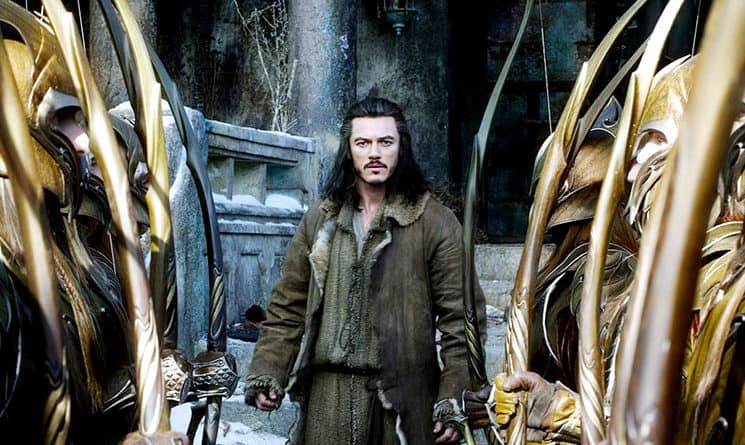When “The Return of the King” hit theaters 11 years ago, it was cause for celebration. Peter Jackson’s Middle-earth opus was coming to a close, and the final movie in the “Lord of the Rings” trilogy promised both an epic finale and a chance to say goodbye to characters and places audiences had grown to love over some 10 hours of screen time. Like the end of any long journey, it was satisfying and bittersweet.
If only the same could be said about “The Hobbit: The Battle of the Five Armies.” Fittingly, Jackson’s second sojourn to Middle-earth ends with a flourish, but there’s a touch of exhaustion, a feeling that this trip was taken not out of necessity but obligation, that those familiar faces and places have lost their luster. Had “The Battle of the Five Armies” stood on its own, it would be a perfectly fine entry in the Middle-earth canon — not the best, but far from the worst. Unfortunately, it’s hobbled by it’s predecessor, “The Hobbit: The Desolation of Smaug,” a bloated, inconsistent mess that sucked the momentum out of “The Battle of the Five Armies” a full year before it hit theaters.
The titular battle takes up most of the film. Smaug, the dragon voiced by Benedict Cumberbatch who served as the main adversary in the previous “Hobbit” film, is dispatched early on. The focus shifts back to the dwarves, led by Thorin (Richard Armitage). Holed up inside the Lonely Mountain with a hoard of treasure, Thorin goes insane with greed. When Bard (Luke Evans), who killed Smaug and now leads the people of Laketown, shows up asking for some gold to help rebuild what the dragon destroyed, Thorin refuses. The mountain, and everything in it, he claims, is his alone. That doesn’t sit well with Thranduil (Lee Pace), the standoffish elf-lord who comes to claim a precious necklace lost in the mountain when the dragon conquered it so many years ago. Meanwhile, an army of orcs is on the march, eager to lay waste to Thorin, the elves, and anyone else who stands in their way.
Oh yeah — there’s a hobbit in this movie, too. Bilbo (Martin Freeman), the reluctant-adventurer-turned-hero, has what amounts to a cameo in this final film. It’s the biggest problem in “The Battle of the Five Armies,” a film that forgets who its protagonist actually is.
Out of all the characters, Bilbo’s the only one who, by this third film, seems to have grown. … Sadly, Bilbo gets short shrift in his own film.
Freeman has been the saving grace of “The Hobbit” trilogy. His Bilbo is compassionate and sarcastic, the wry voice of reason among a collection of stubborn dwarves and obstinate elves. When he appears on screen, it’s a relief, a sign of some levity amidst all the somber posturing. Out of all the characters, Bilbo’s the only one who, by this third film, seems to have grown. He’s tougher now, unwilling to take guff from either gold-crazed dwarves or wise old wizards, and seeing that change play out results in some of the movie’s best moments.
Sadly, Bilbo gets short shrift in his own film. There’s a lot of time devoted to Thorin and Thranduil, each of whom must contend with challenges from within their respective kingdoms. And then there’s the plight of the denizens of Laketown, and a sequence in which Gandalf (Ian McKellen) joins forces with Elrond (Hugo Weaving), Galadriel (Cate Blanchett), and Saruman (Christopher Lee) to (temporarily) defeat Sauron. That’s not to mention the ill-fated love story between the dwarf Kili (Aidan Turner) and the elf Tauriel (Evangeline Lilly); the machinations of the orcs; the continuing antics of Alfrid (Ryan Gage), the cowardly Laketowner who keeps trying to escape the battle with a stash of gold; and the obligatory connections to “The Lord of the Rings.” The screenplay, by Jackson, Fran Walsh, Phillippa Boyens, and Guillermo del Toro, does a fine job wrapping up a few dozen plot threads, but having that much to resolve keeps the movie from being as good as it could’ve been.
The actual battle is fun. It doesn’t have the gravity of the warfare in the “Lord of the Rings” trilogy, but as hour-long battle sequences go, it’s paced well and gives each of the sprawling cast members a few moments to shine.
It’s a hollow ending, though. The individual “Lord of the Rings” movies stand as well on their own as they do as part of a trilogy, but “The Hobbit” films lack that connectivity. They veer wildly in tone, likely because the franchise was initially supposed to be one movie but soon ballooned to two, and then three films. Bilbo’s return home to the Shire at the end of “The Battle of the Five Armies” is less a triumphant homecoming than an afterthought.
Tolkien’s Middle-earth stories are a warning against the corrupting influence of greed, the powers of industrialization, and the arrogance of unchecked leaders. In the decade between his first and second Middle-earth trilogies, Jackson seems to have lost the spirit of Tolkien. “The Battle of the Five Armies” is better than its predecessor, but it’s an echo of an echo, a tale that got lost in the telling.

